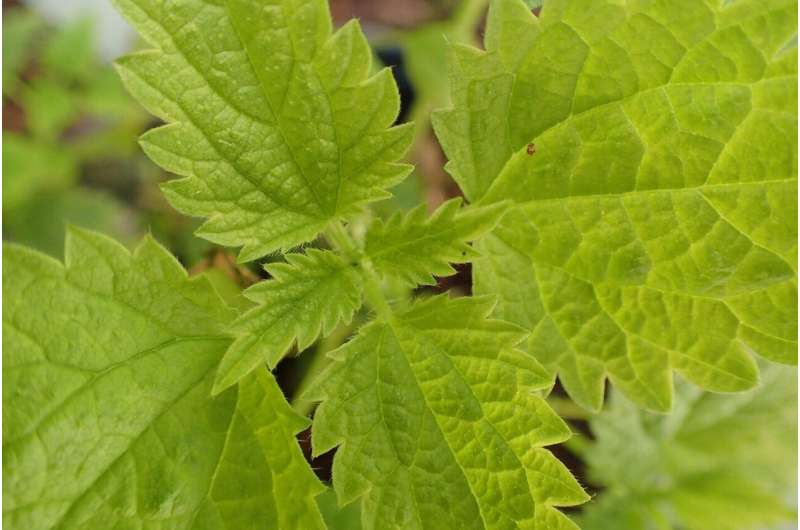This article has been reviewed according to Science X's editorial process and policies. Editors have highlighted the following attributes while ensuring the content's credibility:
fact-checked
peer-reviewed publication
trusted source
proofread
New study finds that plant extracts used by Indigenous people hold promise in treatment of ataxia

A University of California, Irvine-led team of researchers has discovered that extracts from plants used by the Kwakwaka'wakw First Nations peoples in their traditional botanical medicine practices are able to rescue the function of ion channel proteins carrying mutations that cause human episodic ataxia.
The study, "Native American ataxia medicines rescue ataxia-linked mutant potassium channel activity via binding to the voltage sensing domain" was published in June in Nature Communications.
"Episodic ataxia 1 (EA1) is a movement disorder caused by inherited mutations in the human KCNA1 gene, which encodes Kv1.1, a voltage-gated potassium channel essential for normal function of the human nervous system," said Geoffrey W. Abbott, Ph.D., vice dean of basic science research and professor in the Department of Physiology & Biophysics at the UCI School of Medicine. "We found that extracts of stinging nettle, bladderwrack kelp and Pacific ninebark can all correct function of the mutation-carrying proteins causing a specific form of ataxia."
Abbott's research team also found that two compounds contained in these plants, tannic acid and gallic acid, are each able to rescue activity of the EA1-linked mutation-carrying ion channel proteins.
"The plant compounds are the first known compounds to rescue the activity of Kv1.1 carrying EA1-linked loss-of-function sequence variants," said Abbott. "Gallic acid in particular is of therapeutic interest because it is already available over the counter as a nutritional supplement and is very well tolerated in toxicity studies."
Individuals with ataxia exhibit abnormal gait, slurring, eye movement abnormalities, difficulties with balance and walking, tremors, and disruption of fine motor skills.
"These mutations can cause other disorders, including epilepsy, and so there is therapeutic potential for those conditions as well, " said Abbott. "We have discovered that where modern synthetic drug development techniques have failed to produce a drug that directly rescues EA1-linked mutant channel function, traditional botanical medicine developed by North American First Nation peoples has succeeded."
Further research is now needed to explore the efficacy of the plant-derived compounds in pre-clinical and clinical studies.
"We have made a mouse model of a relatively severe form of human EA1 so that we can test the efficacy and safety of gallic acid and also whole plant extracts," said Abbott. "If the pre-clinical studies go well, our goal is to move to clinical trials. Concurrently, we are synthesizing and testing other plant compounds and derivatives to discover other compounds with potential for treating EA1 and related disorders."
There are several forms of ataxia, which is an umbrella term describing loss of coordination or balance.
Together with Abbott, the research team comprised Drs. Rian Manville, J. Alfredo Freites, Doug Tobias (UC Irvine) and Richard Sidlow (Valley Children's Hospital).
More information: Rían W. Manville et al, Native American ataxia medicines rescue ataxia-linked mutant potassium channel activity via binding to the voltage sensing domain, Nature Communications (2023). DOI: 10.1038/s41467-023-38834-6



















